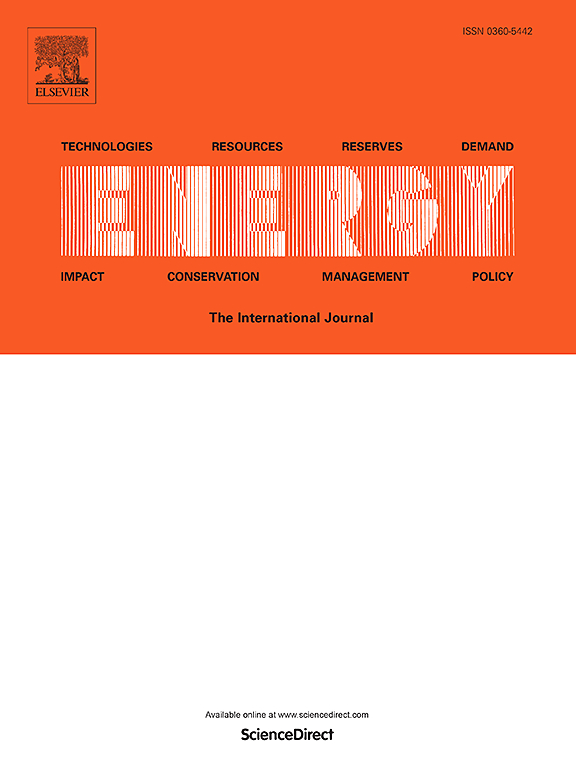From demonstration to diffusion: Community dynamics and incentives analysis in household solar photovoltaic adoption
IF 9
1区 工程技术
Q1 ENERGY & FUELS
引用次数: 0
Abstract
Household solar photovoltaic (PV) systems offer a promising pathway toward decarbonization; however, their widespread adoption remains hindered by low consumer penetration and insufficient diffusion mechanisms. While low-carbon communities have been promoted as prototypes to catalyze PV adoption, existing research lacks a nuanced understanding of how demonstration effects and community behavioral norms shape diffusion dynamics. To address this critical gap, this study employs an agent-based model (ABM) to simulate the adoption of PV systems, leveraging comprehensive survey and electricity consumption data from Tianjin, China. The model captures the interplay between prosumers (PV adopters), potential consumers, and external interventions such as economic subsidies and information dissemination strategies. The findings reveal that moderate community behavioral norms, despite achieving peak adoption 8–9 years later than strong norms, rely on small groups to form demonstration effects, gradually achieving high adoption rates over time. With demonstration effects, the adoption rate increases by 20–30 % under subsidy scenarios and by 38.49 % under information dissemination strategies. Tailored policy strategies are essential. The early adoption of kilowatt-hour subsidies works best in communities with weak behavioral norms, while low-carbon pilot communities with strong governance benefit more from initial installation subsidies. Crucially, the combination of information dissemination and demonstration effects emerges as a highly cost-effective alternative to financial subsidies, accelerating adoption while minimizing fiscal burdens. This study highlights the transformative potential of social dynamics and tailored incentives in driving PV diffusion, offering actionable insights to support global low-carbon energy transitions.
从示范到推广:家庭太阳能光伏采用的社区动态和激励分析
家用太阳能光伏(PV)系统为脱碳提供了一条有希望的途径;然而,由于消费者渗透率低和扩散机制不足,它们的广泛采用仍然受到阻碍。虽然低碳社区已被推广为促进光伏采用的原型,但现有的研究缺乏对示范效应和社区行为规范如何影响扩散动力学的细致理解。为了解决这一关键差距,本研究采用基于主体的模型(ABM)来模拟光伏系统的采用,利用综合调查和中国天津的电力消耗数据。该模型捕捉了产消者(光伏采用者)、潜在消费者和外部干预(如经济补贴和信息传播策略)之间的相互作用。研究结果表明,适度社区行为规范虽然比强规范晚8-9年达到采用率高峰,但依靠小团体形成示范效应,随着时间的推移逐渐实现高采用率。在示范效应下,补贴情景下采用率提高了20 - 30%,信息传播策略下采用率提高了38.49%。量身定制的政策战略至关重要。早期采用千瓦时补贴在行为规范较弱的社区效果最好,而治理较强的低碳试点社区从初始安装补贴中获益更多。至关重要的是,信息传播和示范效应相结合成为财政补贴以外的一种成本效益很高的替代办法,可以加速采用,同时尽量减少财政负担。这项研究强调了社会动态和量身定制的激励措施在推动光伏扩散方面的变革潜力,为支持全球低碳能源转型提供了可行的见解。
本文章由计算机程序翻译,如有差异,请以英文原文为准。
求助全文
约1分钟内获得全文
求助全文
来源期刊

Energy
工程技术-能源与燃料
CiteScore
15.30
自引率
14.40%
发文量
0
审稿时长
14.2 weeks
期刊介绍:
Energy is a multidisciplinary, international journal that publishes research and analysis in the field of energy engineering. Our aim is to become a leading peer-reviewed platform and a trusted source of information for energy-related topics.
The journal covers a range of areas including mechanical engineering, thermal sciences, and energy analysis. We are particularly interested in research on energy modelling, prediction, integrated energy systems, planning, and management.
Additionally, we welcome papers on energy conservation, efficiency, biomass and bioenergy, renewable energy, electricity supply and demand, energy storage, buildings, and economic and policy issues. These topics should align with our broader multidisciplinary focus.
 求助内容:
求助内容: 应助结果提醒方式:
应助结果提醒方式:


